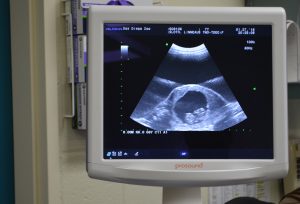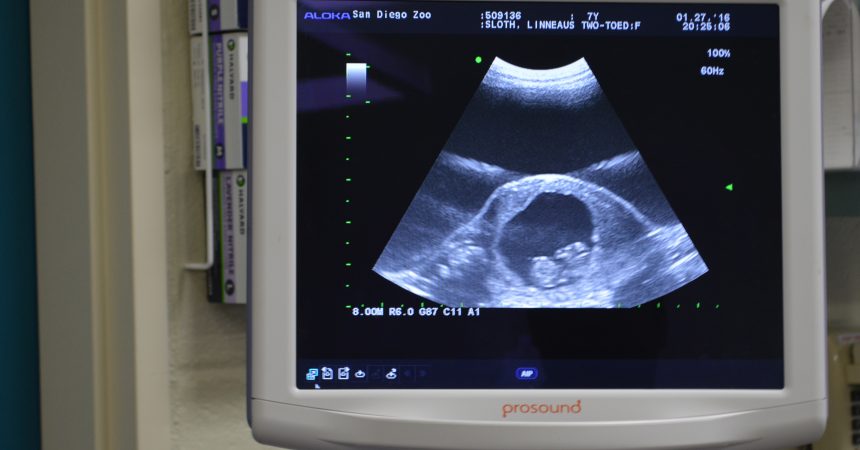Zoo InternQuest is a seven-week career exploration program for San Diego County high school juniors and seniors. Students have the unique opportunity to meet professionals working for the San Diego Zoo, Safari Park, and Institute for Conservation Research, learn about their jobs, and then blog about their experience online. Follow their adventures here on the Zoo’s website!
 Without veterinarians, our own pets would lack the sufficient care they need to remain healthy and happy. Similarly, zoo animals need their own veterinary care. This week, we were able to explore behind the scenes at the Zoo’s hospital with Associate Veterinarian Ben Nevitt. Unlike a typical vet’s office, this hospital must be equipped to care for a vast range of animals that come in all different shapes and sizes. In our visit, we saw this diversity firsthand. One moment, we were meeting two energetic golden retrievers, and next, we were observing a relaxed panda snacking on some bamboo.
Without veterinarians, our own pets would lack the sufficient care they need to remain healthy and happy. Similarly, zoo animals need their own veterinary care. This week, we were able to explore behind the scenes at the Zoo’s hospital with Associate Veterinarian Ben Nevitt. Unlike a typical vet’s office, this hospital must be equipped to care for a vast range of animals that come in all different shapes and sizes. In our visit, we saw this diversity firsthand. One moment, we were meeting two energetic golden retrievers, and next, we were observing a relaxed panda snacking on some bamboo.
Working at the Zoo’s hospital is dream job for Dr. Nevitt, and he was happy to show us around his stomping grounds. He began the tour by walking us through the hospital’s enclosure area. The hospital needs a variety of enclosures to cater to the needs of each patient. By nature, hoofstock are easily frightened animals, so their dirt pins are covered to prevent them from being scared by staff passing by. Animals who tend to be sensitive to cold sleep in barns at night to keep warm, and birds stay in flight cages. Animals who are in critical condition or have a contagious disease stay in the hospital’s separate ICU room. Larger animals like giraffes and elephants have recovery rooms on-site at their exhibits where they receive specialized care. On a typical day, there are around 20-25 animals on site. As you can imagine, this keeps Dr. Nevitt and his team on their toes.
After our introduction to the enclosures, we passed by the Keepers’ Kitchen. Here, the hospital keepers prepare all of the patient’s food. Meals are an important aspect of the animals’ recovery, and medications are often administered to them through their food. Additionally, every species on ground has their own specific diet sheet to make sure they are receiving ample nutrition. Nearby the kitchen, the hospital’s veterinary truck was parked. Once Dr. Nevitt began pointing out its features, we soon realized it wasn’t just any ordinary truck. A container is attached to the back of it that holds the vet’s equipment in different drawer compartments. Containing everything from darting equipment to vaccines, the vehicle allows the vets to be more mobile in both the Zoo and Safari Park.
The next room we visited quickly became my favorite part of the tour: the radiology room. While some animals can be trained to be x-rayed, others are not as compliant and need anesthesia. Using antebrachial tubes, the vets are able to administer the needed anesthesia. The tubes used for reptiles and birds looked small enough to be mistaken for needles. Contrastingly, the tubes used for elephants were slightly larger than my forearm. In this room, Dr. Nevitt also pointed out an eye light machine. This tool is used to get a clearer look at animals’ eyes. I am currently learning about optics in my AP Physics class, so this machine instantly caught my attention. We learned that different intensities and colors of light are used to detect different issues. For example, blue light will make ulcers in an eye visible. The final objects Dr. Nevitt showed us were some crazy x-rays and ultrasounds from prior patients. For me, the two most memorable were an x-ray of a pregnant turtle that appeared to be carrying hundreds of eggs and an ultrasound of a sloth baby. The sloth’s ultrasound is pictured above; you can just barely make out the head and body from the image. At that stage in its development, the baby looks surprisingly similar to a human fetus.
For the tour’s grand finale, Dr. Nevitt brought us into the main exam room. There, we were able to see the neighboring surgical room where animals up to the size of polar bears have been operated on! We remained in the exam room while Dr. Nevitt answered all of our final questions for him and told us stories of his veterinary experiences. When asked about his craziest memory as a vet, he described the time he worked on an elephant under full anesthesia for some dental problems. Getting the elephant to lie down safely was the team’s first obstacle, and once that was accomplished, the elephant needed close monitoring for the rest of the surgery’s duration. The forty people on the job were divided into several teams that monitored everything from the elephant’s breathing to fluid levels.
Pursuing the job of a zoo veterinarian may not be for everyone. As a person who is quite squeamish around blood and injuries, it is probably not a career path I would consider for myself. However, there are simple ways people like you and me can help contribute to the hospital team’s efforts. Being loud and rowdy around animals at zoos can cause them to develop stress-induced behaviors that may negatively affect them. Additionally, throwing coins in ponds and fountains can seriously endanger the birds that drink and swim in the water. Unfortunately, ingested coins and pieces of litter often need to be surgically removed. The amazing work the hospital’s veterinary team does, as well as our own cooperation and dedication to bettering animals’ wellbeing, can together make a positive impact on these impressive species.
Jasmine, Real World Team
Winter Session 2017


